- Home
- Features
- Movies/Media
- Collectibles
- Comics/Books
-
Databases
-
Figure Database
>
-
X-Plus Toho/Daiei/Other
>
- X-Plus 30 cm Godzilla/Toho Part One
- X-Plus 30 cm Godzilla/Toho Part Two
- X-Plus Large Monster Series Godzilla/Toho Part One
- X-Plus Large Monster Series Godzilla/Toho Part Two
- X-Plus Godzilla/Toho Pre-2007
- X-Plus Godzilla/Toho Gigantic Series
- X-Plus Daiei/Pacific Rim/Other
- X-Plus Daiei/Other Pre-2009
- X-Plus Toho/Daiei DefoReal/More Part One
- X-Plus Toho/Daiei DefoReal/More Part Two
- X-Plus Godzilla/Toho Other Figure Lines
- X-Plus Classic Creatures & More
- Star Ace/X-Plus Classic Creatures & More
-
X-Plus Ultraman
>
- X-Plus Ultraman Pre-2012 Part One
- X-Plus Ultraman Pre-2012 Part Two
- X-Plus Ultraman 2012 - 2013
- X-Plus Ultraman 2014 - 2015
- X-Plus Ultraman 2016 - 2017
- X-Plus Ultraman 2018 - 2019
- X-Plus Ultraman 2020 - 2021
- X-Plus Ultraman 2022 - 2023
- X-Plus Ultraman Gigantics/DefoReals
- X-Plus Ultraman RMC
- X-Plus Ultraman RMC Plus
- X-Plus Ultraman Other Figure Lines
- X-Plus Tokusatsu
- Bandai/Tamashii >
- Banpresto
- NECA >
- Medicom Toys >
- Kaiyodo/Revoltech
- Diamond Select Toys
- Funko/Jakks/Others
- Playmates Toys
- Art Spirits
- Mezco Toyz
-
X-Plus Toho/Daiei/Other
>
- Movie Database >
- Comic/Book Database >
-
Figure Database
>
- Marketplace
- Kaiju Addicts
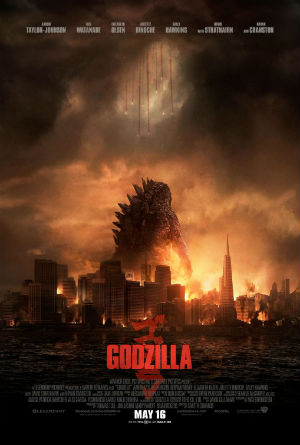 Godzilla is a 2014 American science fiction monster film directed by Gareth Edwards. It is a reboot of the Godzilla film franchise and retells the origins of Godzilla in contemporary times as a "terrifying force of nature". The film is set in the present day, fifteen years after the unearthing of two chrysalises in a mine in the Philippines. From the pods come two giant radiation-eating creatures, known as "MUTOs", which cause great damage in Japan, Hawaii and the western United States. Their awakening also stirs a much larger, destructive, ancient alpha predator known as "Godzilla", whose existence has been kept secret by the U.S. government since 1954. It stars Aaron Taylor-Johnson, Ken Watanabe, Elizabeth Olsen, Juliette Binoche, Sally Hawkins, David Strathairn, and Bryan Cranston. The screenplay is credited to Max Borenstein but includes contributions from David Callaham, David S. Goyer, Drew Pearce, and Frank Darabont. The film is a co-production between Legendary Pictures and Warner Bros. Pictures. It was distributed by Warner Bros. worldwide, except in Japan where it was distributed by Toho. It is the second Godzilla film to be fully filmed and produced by an American studio, the first being the 1998 film of the same name. The project initially began in 2004 and was originally intended to be an IMAX short film titled, Godzilla 3D: To the Max, to be directed by Yoshimitsu Banno, director of Godzilla vs. Hedorah. After several years in development, the production was transferred to Legendary for development as a feature film. Producers Kenji Okuhira, Brian Rogers and director Banno were retained by Legendary. Shortly before filming began, several producers were dismissed from the production and a court case is ongoing between themselves and Legendary. The movie was filmed in the United States and Canada in 2013. Godzilla was released worldwide in 2D, 3D and IMAX on May 15, 2014; in North America on May 16; with releases in China on June 13 and Japan on July 25, 2014. Critical reception for the film has been positive, with some praising the film for its slow pace and dramatic build-up, while others criticized the length of time before Godzilla's appearance, as well as his on-screen duration and the fact that the film does not focus primarily on him; however the film's direction, visual effects, music, characterization and creature designs were positively received. Critics and fans have also praised director Edwards for honoring the spirit and legacy of the Godzilla character and franchise. Godzilla became an immediate box office success upon its release, earning $93.2 million during its U.S. premiere release and a worldwide estimate of $200 million on its opening weekend, the fourth highest for a 2014 film so far and one of the best late-night openings for a non-sequel. Godzilla has so far earned a total of $524,976,069 as of August 28, 2014 (domestic totals) and August 31, 2014 (International totals). Its box office success has prompted Legendary to proceed with sequels with Edwards confirmed to return as director for a planned trilogy, with the sequel targeted for a June 8, 2018 release. 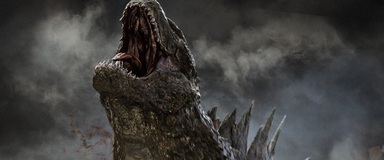 Plot In 1954, the United States Armed Forces are assembled to witness a secret nuclear test. A hydrogen bomb, decorated with a monster insignia, is detonated when a giant creature emerges from the ocean. In 1999, Project Monarch scientists Ishiro Serizawa and Vivienne Graham investigate a colossal skeleton in a collapsed mine in the Philippines. They find two chrysalises; one dormant, one broken open, and whatever hatched has made a trail through the forest to the sea. In Japan, the Janjira Nuclear Power Plant experiences unusual seismic activity. Joe Brody, the plant's supervisor, sends his wife Sandra and a team of technicians into the reactor. While the team is inside, the reactor is breached, releasing radioactive steam. Sandra and her team are unable to escape and the plant collapses into ruin. Fifteen years later, Joe's son Ford is a US Navy explosive ordnance disposal officer, living in San Francisco with his wife Elle and son Sam. After Joe is detained for trespassing in the Janjira quarantine zone, Ford returns to Japan. Convinced of a cover-up of the cause of the disaster, Joe convinces Ford to help him retrieve vital data at their old home. They find the zone is not contaminated, but after recovering the data, soldiers detain them in a secret facility within the plant's ruins. Inside, a giant winged creature emerges from a massive chrysalis and escapes, destroying the facility. Joe is injured and later dies. The incident is reported as an earthquake. Serizawa, Graham and Ford join a US Navy task force led by Admiral William Stenz on the aircraft carrier USS Saratoga to search for the creature, dubbed "Massive Unidentified Terrestrial Organism," or "MUTO." To Ford, the scientists reveal how a 1954 deep sea expedition triggered the appearance of Godzilla, a prehistoric alpha predator; how early nuclear tests were really attempts to kill it; that Project Monarch was formed secretly to study Godzilla; and that the MUTO caused the Janjira destruction. Ford reveals that Joe had monitored echolocation signals that indicated the MUTO was communicating with something. The MUTO is found feeding off the wreckage of a Russian nuclear submarine it deposited in a forest in Hawaii. The military attacks and the battle shifts to Honolulu airport where Ford is waiting for a flight home. Godzilla arrives, causing a tsunami that devastates Waikiki. After briefly fighting Godzilla, the MUTO flies away, and Honolulu is left in ruin. Meanwhile, at a Nevada nuclear waste facility, a second, larger and wingless MUTO, emerges and devastates Las Vegas. The scientists deduce that the second MUTO is female, the two were communicating and will meet to breed. The task force follows Godzilla, projecting that the monsters will meet in San Francisco Bay. Stenz approves the use of a nuclear explosion to kill the monsters, over the scientists' objections. Ford returns with the military to California and joins a team delivering warheads to San Francisco by train. The female MUTO destroys the train and devours one of the warheads. The remaining warhead is airlifted to San Francisco and activated. It is taken by the MUTOs, who construct a nest around it in the downtown area. People are evacuating across the Golden Gate Bridge when Godzilla arrives. The Navy attempts to combat Godzilla, allowing many to escape before Godzilla destroys the bridge. Accepting Serizawa's advice, Stenz orders the military to allow the monsters to fight. While Godzilla battles both MUTOs, a team of soldiers, including Ford, enter the city by HALO jump to find and disarm the warhead. Unable to disarm the warhead, they put it on a boat for disposal at sea. Ford incinerates the nest, causing the female to leave the battle. Godzilla then uses its tail to kill the male, crushing him against a building. The female finds and kills the team on the boat. Ford is saved when Godzilla kills the female by firing atomic breath down her throat, decapitating her. Godzilla then collapses from injury and exhaustion. Ford pilots the boat out to sea, and is rescued before the warhead detonates. The next day, Ford is reunited with Elle and Sam. Godzilla, thought to be dead, suddenly awakens and returns to the ocean, as survivors cheer. Cast Aaron Taylor-Johnson as Ford Brody The son of Joe and Sandra Brody. After the plant collapse, he grows up in the United States and becomes a Lieutenant in the United State Navy as a explosive ordnance disposal technician. When Taylor-Johnson first met with Edwards, they talked for six hours about the archetype of the character. Taylor-Johnson stated that Edwards brought a level of "intimacy" to the film and praised him for treating it like a "big budget art film". He stated, "I think he went for the right balance of sensitivity and testosterone. I've probably been more emotionally challenged in this film than in any independent drama or thriller". Taylor-Johnson went through training to achieve military etiquette, and said he performed "quite a lot of the stunts". The role of Ford was reportedly offered to Joseph Gordon-Levitt in 2012, but he declined. By 2013, Henry Cavill, Scoot McNairy, and Caleb Landry Jones comprised the shortlist for the role before Legendary took interest in Taylor-Johnson. CJ Adams portrays Brody as a young boy. Ken Watanabe as Dr. Ishiro Serizawa The lead scientist for Project Monarch. Watanabe was initially skeptical about a new Hollywood version of Godzilla. However, after a meeting with Edwards, Watanabe was convinced that a Hollywood version can indeed be done and invested complete faith in Edwards. Watanabe stated, "If you are telling the Godzilla story, you cannot separate it from the nuclear element, and the first thing I asked was whether there was going to be the nuclear element, as that now, in Japan, is a really sensitive problem. I was worried about how I could use that and how I could make that okay, but Gareth understood those feelings." Watanabe's character is named after the director of various Godzilla films, Ishiro Honda, and after the scientist who killed Godzilla in the 1954 original film, Dr. Daisuke Serizawa. Bryan Cranston as Joe Brody Ford's father and former lead engineer at the Janjira nuclear plant until its destruction in 1999. Cranston has said that Edwards' approach to the film and to its characterization is what drew him to the project. He stated, "The most important thing about this version of Godzilla is the characterization. The characters in this are real, well drawn. [Edwards] takes the time to really establish who these people are, that you root for them, that you invest in these characters, and that you care for them. That's the best part of it." Cranston additionally added, "I wouldn't be here if it was just, 'Look out, this monster is crushing everything!' Instead of trying to humanize the beast what this film does - and, I think, rightfully so - is humanize the people. You root for them and sympathize with their plight". Cranston also joined the film because he has been a fan of Godzilla since childhood, stating, "Godzilla was always my favorite monster when I was young. He was unapologetic." Cranston had to wear a wig for his scenes due to finishing Breaking Bad days before joining Godzilla. Elizabeth Olsen as Elle Brody A nurse at San Francisco General Hospital. She is married to Ford Brody and is the mother of Sam Brody. Juliette Binoche as Sandra Brody A nuclear regulations consultant at the Janjira nuclear plant. She is married to Joe Brody and is the mother of Ford Brody. Sally Hawkins as Dr. Vivienne Graham, A scientist with Project Monarch. She has been Serizawa's "right hand" for many years. Hawkins was the last actress to be cast while the film was undergoing principal photography. David Strathairn as Rear Admiral William Stenz, USN. An Admiral in the Seventh Fleet of the United States Navy. He is the commander of the United States Navy task force in charge of tracking down the escaped MUTO. Carson Bolde as Sam Brody The young son of Ford and Elle Brody. Richard T. Jones as Captain Russell Hampton, USN The commander of the USS Saratoga, an aircraft carrier and the lead ship of the MUTO task force. Victor Rasuk as Sergeant Tre Morales, USAF A sergeant of the United States Air Force. He becomes friends with Ford after the battles at Honolulu. Additional roles include: Patrick Sabongui as First Lieutenant Marcus Waltz, USAF, Jared Keeso as Jump Master, Luc Roderique as Bomb Tracker, Al Sapienza as Huddleston, the head of security at the Janjira MUTO facility, Brian Markinson as Whalen, a scientist at the Janjira MUTO facility, Catherine Lough Haggquist as PO #1 Martinez, Jake Cunanan as Akio, Warren Takeuchi as Akio's father, Yuki Morita as Akio's mother, Ken Yamamura as Takashi, Garry Chalk as Stan Walsh, Christian Tessier, Anthony Konechny, James D. Deaver as Captain Freeman, Primo Allon as a member of the mine team, and Jeric Ross. Godzilla franchise actor Akira Takarada was cast as an immigration officer, but his scene was cut from the final film. 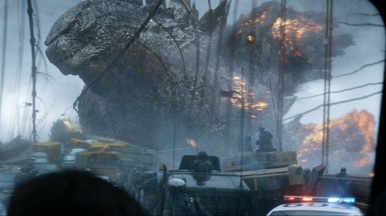 Production The film is a co-production of Legendary Pictures and Warner Bros. Pictures, with the participation of Toho in creature design, sound design and plot. It has an estimated $160 million production budget, financed 75% by Legendary and 25% by Warner Bros. The movie has an estimated $65 million promotion and advertising budget, for a total estimated budget of $225 million. The film is Warner Bros. Pictures' first new Godzilla property since 1959's Gigantis, the Fire Monster. Development After the release of 2004's Godzilla: Final Wars, marking the 50th anniversary of the Godzilla film franchise, Toho announced that it would not produce any films featuring the Godzilla character for ten years. Toho demolished the water stage on its lot used in numerous Godzilla films to stage water scenes. TriStar Pictures, which had made the 1998 Godzilla film and held the rights to make a trilogy of films, let their rights expire in 2003. Godzilla 3D In August 2004, Yoshimitsu Banno, who had directed 1971's Godzilla vs. Hedorah, announced that he had secured the rights from Toho to make a Godzilla IMAX 3D short film at his Advanced Audiovisual Productions (AAP) production company. The film was tentatively titled Godzilla 3D to the Max, and was to be a remake of the Godzilla vs. Hedorah story. In 2005, American cinematographer Peter Anderson was added to the project as cinematographer, visual effects supervisor and co-producer. In 2007, American producer Brian Rogers signed on to the project after Anderson introduced him to Banno and AAP producer Kenji Okuhira. In 2007, also through Anderson, Kerner Optical then came on board to develop the technology and to produce the 3-D film. And with Kerner's backing, in the fall of 2007 the team met with Toho in Tokyo where they re-negotiated their license to allow the release of a feature-length 3-D theatrical production. In 2008, Kerner was facing financial troubles that threatened to cancel the production. Rogers, Anderson and the then-proposed director Keith Melton met with Legendary Pictures to get their backing on a 3-D theatrical film. In 2009, it was green-lit by Legendary to go to production. From the AAP production team, Banno and Okuhira would remain on the project as executive producers and Rogers as a producer. In November 2013, Banno stated that he still planned to make a sequel to Godzilla vs. Hedorah. 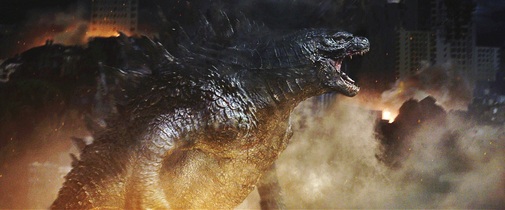 Legendary production In August 2009, rumors surfaced that Legendary was in talks with Toho to produce a new American Godzilla film to be released in 2012, and on March 29, 2010, it was officially confirmed by Toho and Legendary that Legendary had acquired the rights to Godzilla. According to Hideyuki Takai, president of Toho Co.: “We are delighted in rebooting the character together to realize its much-anticipated return by fans from all over the world. We are anxious to find out where Godzilla’s new stomping will take us.” Legendary announced it would reboot the franchise with Warner Bros. co-producing and co-financing. Legendary announced it would make the new film closer in style to the original 1954 film rather than the 1998 film and its "iguana-like creature". According to Thomas Tull, chairman and CEO of Legendary Pictures, "Our plans are to produce the Godzilla that we, as fans, would want to see. We intend to do justice to those essential elements that have allowed this character to remain as pop culturally relevant for as long as it has." Film producers Dan Lin, Roy Lee, Doug Davison and Legendary's Thomas Tull and Jon Jashni were added to the project to work with Rogers, Banno and Okuhira. At the 3D Summit conference held in September 2010 at Universal Studios, producer Brian Rogers confirmed a planned date of 2012. The reboot is a live-action project featuring a fully computer-generated Godzilla. Godzilla fought at least one or two monsters, rather than simply the military as seen in Emmerich's 1998 remake. Rogers also confirmed that the two Godzilla head designs that were floating around the Internet and rumored to have been designed by Legendary and sent to Toho for approval were fake, and were just simply fan-made. He also went on to say that he and Legendary Pictures wished to revive Godzilla in the same fashion Legendary had revived Batman. In October 2010, it was rumored that Guillermo del Toro was approached to direct the film, which del Toro later denied. In January 2011, Legendary named British filmmaker Gareth Edwards, director of the 2010 film Monsters, to direct the film. In an interview publicizing the DVD release of his film Monsters, Edwards discussed the new film: "this will definitely have a very different feel than the 1998 film and our biggest concern is making sure we get it right for the fans because we know their concerns. It must be brilliant in every category because I'm a fan as well." "Without addressing anything specific, everyone knows how important it is to get it right." The film remained in development into 2012, missing the planned release date. Edwards worked on his vision for the film at a stage at the Warner Bros. lot. The production team developed Godzilla models, artwork and pre-visualizations of the action scenes of the movie. From the lot, Edward directed a short teaser video, shown to Legendary executives and later shown at the San Diego Comic-Con International in July 2012. 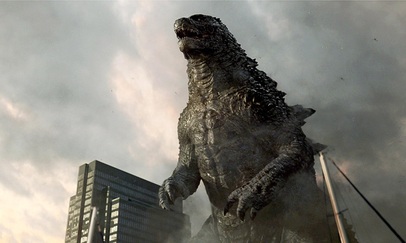 Writing In October 2010, the first script was commissioned and David Callaham (screenwriter of Doom and Horsemen) was named to write it. In an interview with Fresh-voices.com, Callaham spoke about his first draft of the film, stating, "Godzilla is a pretty cut and dry, giant monster that smashes stuff. But the reason I got excited about it is because I saw themes and relationships to the modern world that I could tell in this story that was important." Callaham did research on Godzilla's history, animal documentaries, as well as natural disasters and local government disaster planning in order to depict the events as close as possible to real-life disasters. After Callaham, four more writers worked on the screenplay during the film's development. When Edwards' signing was announced, it was also announced that Callaham's first draft would be rewritten by another writer. In July 2011, David S. Goyer was attached to do the rewrite of the film's screenplay. Goyer only worked a few weeks on the script and did not get a screenwriter credit. In November 2011, Max Borenstein was hired to continue work on the script. In October 2012, Legendary announced that writer Drew Pearce would polish the script, making the principal characters older to suit the actors that Legendary had intended to cast. In January 2013, Frank Darabont was added to write the final/shooting script. In interviews, Darabont described his plans for Godzilla as returning it to a "terrifying force of nature". The film will add a "very compelling human drama" and that Godzilla would be tied to a "different contemporary issue" rather than the original atomic bomb testing. In addition to contributing to the script, Darabont mainly focused on the emotional aspect and further development of the characters. Commenting on Darabont's work, Edwards stated, "We blocked out the whole story and Frank did a pass at helping the characters and emotions. He delivered on that. Frank brought a lot of heart to it and soul." Edwards additionally pointed out that one particular scene from Darabont's script convinced Bryan Cranston and Juliette Binoche to join the film. Edwards felt it was not believable that a creature as giant as Godzilla could go undetected by humanity, so the writers conceived of the idea that the monster's existence had been covered up by the United States government, and as such their nuclear tests in the Pacific during the 1950's were actually an attempt to kill the creature. In July 2013, Edwards confirmed an origin story for the film. He also confirmed that Godzilla would be an anti-hero rather than a villain or a hero. He also discussed the themes incorporated into the film, stating "Godzilla is definitely a representation of the wrath of nature. We've taken it very seriously and the theme is man versus nature and Godzilla is certainly the nature side of it. You can't win that fight. Nature's always going to win and that's what the subtext of our movie is about. He's the punishment we deserve". Actress Elizabeth Olsen also confirmed that the film returns to the gritty roots of the original film and spoke about its themes as well, "There's a strong theme about the importance of family in it as well as the theme of trying to control nature and how that backfires in the end." Olsen has also stated in a different interview about the titular character that, "Godzilla is just so deserving of a good American remake, and I really hope we did it and I really feel like we did." Actor Bryan Cranston praised Edwards' vision, tone, and pitch for the film and titular character. In an interview with Canada's Entertainment Tonight, he compared Edwards' approach similar to Steven Spielberg's style in Jaws where the film does not immediately show the beast but rather build up to its appearance while still delivering an eerie and terrifying off-screen presence. In licensing Godzilla to Legendary, Toho set down some specific conditions: that Godzilla is born of a nuclear incident and it be set in Japan. The film has a title montage set in 1954, and then moves forward to 1999 and deals with a mysterious disaster at a fictional Japanese nuclear power plant named Janjira. Legendary rejected an origin story where a Godzilla carcass would be found entombed in Siberia. The idea was rejected after the production learned that Man of Steel had a potentially similar scene. The US Army reviewed the script, suggesting corrections for accuracy. 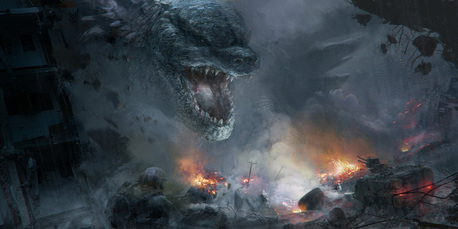 Creature design In interviews at the 2013 Comic-Con, Edwards discussed the Godzilla creature design. He and the design group reviewed all previous incarnations of Godzilla's design for inspiration. Edwards commented, "The way I tried to view it was to imagine Godzilla was a real creature and someone from Toho saw him in the 1950s and ran back to the studio to make a movie about the creature and was trying their best to remember it and draw it. And in our film you get to see him for real." He went on to say that his Godzilla remains true to the original in all aspects. Edwards also stressed that, "It was important to me that this felt like a Toho Godzilla" and concluded by wishing, "I'd love ours (Godzilla) to be considered as part of the Toho group." In October 2013, toy and collectible web sites offering pre-orders of merchandise for the film revealed aspects of the other creatures to appear in the movie. The other creatures are, as a group, known as "MUTOs", with some having the ability to fly and being multi-limbed. In a January 2014 interview in Total Film magazine, it was revealed that Godzilla would be 350 ft (106 metres) tall, the tallest incarnation of Godzilla to date. According to special effect chief Jim Rygiel, the mechanics of Godzilla's fighting style is based on the study of animals, primarily bears and Komodo dragons. For Empire magazine's April 2014 issue, the magazine cover featured a picture of Godzilla, revealing the monster's design. According to director Edwards, elements of the faces of bears, dogs and eagles were incorporated into the design of Godzilla's face. Motion capture by the special effects firm The Imaginarium was also utilized in the movement of the movie's monsters in film sequences. Andy Serkis provided consulting work on the film's motion capture sequences in order to "control the souls" of the creatures. The Godzilla "roar" was revamped for the movie. Toho provided the original recording of the roar for use. Sound designer Erik Aadahl then utilized the original roar and improved on it, according to director Edwards. Aadahl and fellow sound designer Ethan Van Der Ryn spent six months over the three-year production span getting the roar right. Through the use of microphones that could record sound inaudible to humans, the team found sounds to match the initial shriek and the finishing bellow. The new roar retained the musical key and cadence of the roar, going from a C to a D on the piano. The final version was the 50th version produced. The pair tested the roar on a back lot at Warner Bros, using a tour speaker array for The Rolling Stones. They estimated the roar could be heard 3 miles (4.8 km) away. In IMAX theatres, the roar was integrated into the sound of the "Welcome to IMAX" sequence shown before Godzilla showings. In an interview with The Verge, Edwards commented that it took over a year to design the MUTO creatures, stressing that it took that long to create something that was aimed to be new and different for contemporary society. Edwards and the design team looked towards past monster characters from such films as Jurassic Park, Alien, Starship Troopers and King Kong for inspiration and reflected back on what made these monsters and their designs so iconic. From this, the design for the MUTO monsters kept evolving and "mutating", according to Edwards, into a design he felt was more cohesive. 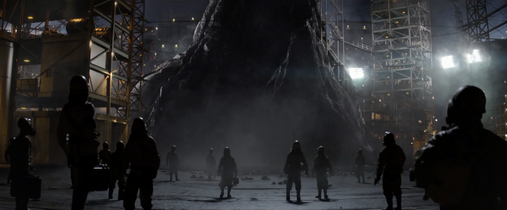 Pre-production In late 2012, the plans for the film's filming, release and distribution were revealed. In September 2012, Legendary announced a theatrical release date of May 16, 2014 in 3-D. IMAX announced that the film would also be released in IMAX 3D on May 16, 2014. Warner Brothers distributed the film worldwide, except in Japan, where it was distributed by Toho. At that time, Legendary Pictures added Alex Garcia and Patricia Whitcher as executive producers. In December, Dan Lin revealed that the film would likely start filming in Vancouver in March 2013. Legendary turned its attention to casting parts for the movie. On January 7, 2013, it was reported that Joseph Gordon-Levitt had turned down being cast in the film in the fall of 2012. It was reported that Henry Cavill, Scoot McNairy, and Caleb Landry Jones comprised the shortlist for lead of the film. On January 10, it was first reported that Legendary Pictures was interested in Aaron Taylor-Johnson for the lead role. It was reported that Bryan Cranston and Elizabeth Olsen were also in talks to co-star. Olsen confirmed her involvement at the 2013 BAFTA awards. Juliette Binoche and David Strathairn were then signed on to join Taylor-Johnson, Cranston and Olsen in the film. As filming approached, more news was being made about the project. In January 2013, Mary Parent joined the project as a producer for Disruption Entertainment. and producers Dan Lin, Roy Lee and Doug Davison were dismissed from the project. According to The Hollywood Reporter, the producers left over creative and financial differences with Legendary Pictures, and Legendary was buying out their producer contracts, a move which led to court. On January 9, Legendary Pictures filed a 'Complaint for Declaratory Relief' lawsuit against Lin, Lee and Davison in California State Court to spell out any fees owed to the individuals, who had signed an agreement with Legendary and were working with Legendary on the film's development. According to the complaint, Legendary had decided in the fall of 2012 to not employ the three as producers on the film and the three were not eligible for any producer fees. The three filed a counter-claim, that the agreement cited by Legendary was not in force and that the original working agreement was breached by Legendary. The three argued that the suit should be decided in open court, not in arbitration, and that Legendary should be responsible for damages for breach of contract. At court, the judge dismissed the arbitration and ordered mediation followed by jury trial if necessary. Legendary appealed the decision and lost the appeal in March 2014, leaving the case in California Superior Court for trial. At the start of principal photography in March 2013, Legendary formally announced the cast and producers. Yoshimitsu Banno, Alex Garcia, Kenji Okuhira and Patricia Whitcher were formally named as executive producers and Legendary announced the addition of Ken Watanabe to the cast. After filming started, Richard T. Jones and Sally Hawkins were added. From the film set, a photograph of actor Akira Takarada (star of the original Godzilla including five sequels) with director Edwards was released. Takarada had publicly appealed to be part of the production and the photo indicates some sort of role for the Japanese actor in the reboot. In April 2014, Takarada said in a interview that his role was cut from the final version of the film. He had the role of an immigration officer. Edwards stated that cutting Takarada's role was his "biggest regret". 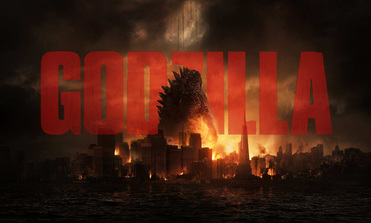 Filming Principal photography began on March 18, 2013 in Vancouver, under the working title of "Nautilus," with scenes shot at the Vancouver Convention Centre, inside BC Place, and at Hi-View Lookout in Cypress Provincial Park, West Vancouver (as San Francisco's Bay Area Park). This was followed by filming in the Richmond neighborhood of Steveston. A large battle scene was shot on Moncton St, involving approximately 200 soldiers and many military vehicles. Another scene was filmed at the fisherman's wharf along Finn Slough. Additional shooting took place on Vancouver Island, around Nanaimo and Victoria in British Columbia. Additional filming involving extras took place around industrial areas of Coquitlam, British Columbia. The scenes at the Convention Centre stood in for the Honolulu and Tokyo airports, while other locations in Vancouver were used to simulate scenes in San Francisco, Tokyo and the Philippines. Filming also used the stages of Burnaby's Canadian Motion Picture Park, (CMPP) where crews built a San Francisco Chinatown street, a giant sinkhole set used for the Philippine mine and the MUTO nest and a 400 feet (120 m) section of the Golden Gate Bridge. The Chinatown street was built on the site of the New York City set built for the Watchmen film. Further on-location filming was done in June and July 2013 in Honolulu, Hawaii. On June 2, 2013, over 2,000 people applied at an open casting call in Hawaii to be cast as extras. Over 200 extras were hired for the expected three weeks of shooting in Hawaii, which included dressing up Waikiki Beach as the site of disaster. Eastern Oahu was used as a double for the Marshall Islands. According to The Hollywood Reporter, principal photography on Godzilla wrapped on the weekend of July 13–14. In an interview, Aaron Taylor-Johnson described the filming as mostly on-location, with very little use of green screens. He described the film crew as fairly small compared to other films he has worked on, "almost an independent production." CGI was used to add elements later. Seamus McGarvey served as the film's cinematographer, shooting the film digitally using Arri Alexa cameras with Panavision C-Series anamorphic lenses. Sequences of the film set in the year 1954 were shot using vintage lenses from the early 1960s in order to give the film a "distant period feel." This effect was enhanced though the digital intermediate's colour grading, as McGarvey noted that the "look I wanted was a peeled look with muted colors and diffusion on the highlights, a sense of period distance. I found a lot of photographs and magazines, and I knew that I wanted the blacks to be imbued with a tint of magenta."[110] Though the film was made to be released in 3D, it will receive a predominantly 2D release. McGarvey himself decided to shoot the film as if it were only 2D, because he dislikes working with 3D filming equipment and the experience of watching 3D films in theatres. The United States Navy co-operated in the making of the movie and filming took place on three United States Navy aircraft carriers: the Carl Vinson, the Nimitz and the Ronald Reagan. Part of the opening sequence was filmed on the USS Missouri at Pearl Harbor. The United States Army also participated in the movie with the support of three technical advisors. The United States Marine Corps, which had participated in the 1998 film, declined to participate after reviewing the script, which featured Navy personnel. Taylor-Johnson was put through a "mini-bootcamp" by retired Marine Sgt. Maj. James D. Dever, one of the film's military technical advisers, to "ensure he had good military bearing." Dever also helped stunt men train for high-altitude, low-opening jumps. 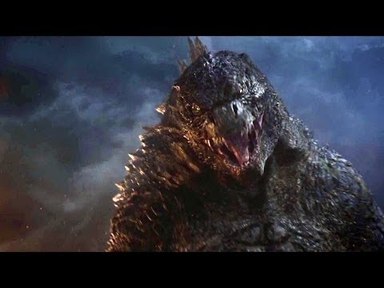 Post-production Visual effects on the film were supervised by visual effects supervisor Jim Rygiel, best known for his work on The Lord of the Rings movie trilogy. Rygiel has stated that the effects are in the spirit of the original series, with the blessing of Toho, although the monster would be "more dynamic than a guy in a big rubber suit." Visual and special effects companies working on the picture include The Moving Picture Company (MPC), Double Negative, Weta Digital, Amalgamated Dynamics, ComputerCafe/CafeFX, Lidar VFX, Scanline VFX, Stereo D and The Third Floor. The production used high-quality panorama photos of the San Francisco skyline, and built a three-dimensional map of the city. The map was used in the background of sequences shot on the bridge set in Vancouver. According to Jim Rygiel, “this technique gives you a real city that is accurate down to every piece of mortar in a brick building, so, using that, we were able to composite the live action shots with the key frame-animated monsters destroying digital buildings into a seamless whole.” Army vehicles, including tanks were provided by CGI and not real vehicles. The studio digitized actual military equipment from the 7th Infantry Division of the Army. The film's sound was mixed at Warner Bros.' studio in Burbank, California. The tracks were mixed by Gregg Landaker in the Dolby Atmos surround-sound format for exhibition in theaters with Atmos-equipped sound systems. Production of the movie was completed in the last week of March 2014. Music Film composer Alexandre Desplat was hired to compose an original soundtrack for Godzilla. Desplat had not composed previously for a monster film, having worked on movies such as The King's Speech, The Curious Case of Benjamin Button, and the final two Harry Potter films. Desplat accepted the contract after being impressed with Edwards' Monsters. Desplat describes the soundtrack for Godzilla as "non-stop fortissimo, with lots of brass, Japanese drums, and electric violin." The score is also conducted by Desplat. The film score was released by WaterTower Music on May 12 and 13, 2014. The film also features György Ligeti's Requiem, Dusty Springfield's 1969 recording of "Breakfast in Bed," and Elvis Presley's "(You're the) Devil in Disguise." 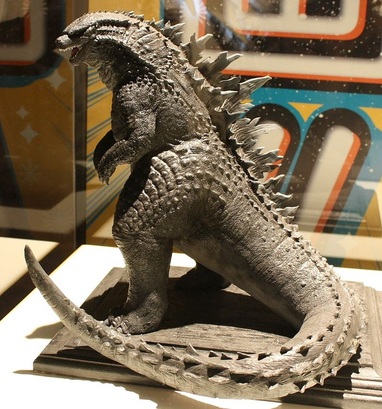 Marketing In promotion of the project, visitors to the 2010 San Diego Comic-Con (SDCC) received a t-shirt with an image of the new Godzilla design, an image credited to comics and manga publisher UDON Entertainment. Artist Gonzalo Ordóñez Arias worked with Legendary and Toho to create the painting. Further, visitors to the Legendary Pictures booth at the convention could view an animation of the new Godzilla breathing radioactive fire superimposed over their image captured via a webcam. The augmented reality promotion was designed by Talking Dog Studios of Saskatchewan, Canada. At a session during the July 2012 SDCC, Legendary presented both a poster for the film and a teaser trailer. The teaser trailer included a depiction of Godzilla faithful to the Toho monster, including its roar, and a "gigantic centipede-like monster." The centipede-like monster was not used in the final film. Screenwriter Max Borenstein later confirmed that the centipede monster was conceived only for the teaser and only to indicate that Godzilla would fight another creature. It was included in the teaser before Borenstein completed writing the script. During filming in Vancouver, Legendary released several videos and still pictures of filming in Vancouver on its Facebook site. Pictures included a destroyed subway car with a green screen backdrop, soldiers inspecting a radioactive vault and wreckage on a shoreline. In July 2013, Legendary launched a "viral" website godzillaencounter.com in conjunction with the film. The company was promoting the film at the 2013 SDCC, and converted a warehouse in San Diego to the "Godzilla Encounter" exhibit in conjunction with the convention. According to USA Today, the exhibit was "part museum, part theme park" with displays to simulate an experience of a Godzilla attack. The exhibit also had artifacts from the franchise series, including the "Oxygen Destroyer" of the original film, and a Godzilla costume from Godzilla 2000. An audio sample was released on Godzillaencounter.com of an announcement suggesting Godzilla or a "gigantic atomic creature" attacking San Diego. At a session at the 2013 Comic-Con, Legendary showed footage from the film. As reported by various media, the footage is of a large monster, reminiscent of the Cloverfield monster, attacking an airport, when Godzilla's foot appears next to the monster. Godzilla's height is revealed to be several times the size of the other monster and a battle ensues, but Godzilla's face is not revealed. Various clips of scenes with Cranston, Taylor-Johnson and Olsen were also shown. In October 2013, the proof of concept footage shown at SDCC 2012 was leaked online and was available on several video sharing websites for several days before Warner Bros. and Legendary managed to have it fully removed. The first official trailer was released online on December 10, 2013, and was attached to theatrical showings of The Hobbit: The Desolation of Smaug in select theaters. Also on December 10, Toho released a slightly different version of the trailer with Japanese subtitles, and a TV spot. Within two days, the trailer surpassed nine million views on YouTube. Legendary launched a viral web site www.mutoresearch.net just prior to the trailer release, with video from the trailer and the trailer itself. Toho launched a web site of its own, godzilla.jp, with a simple arcade game of Godzilla stomping on Tokyo and using his radioactive breath, as well as appearances from King Ghidorah and Mothra. The second trailer was released on February 25, 2014. It revealed more scenes of destruction by Godzilla on San Francisco and Las Vegas, brief glimpses of other creatures, as well as a conspiracy plot intertwined with the atomic blast tests in the Pacific Ocean in 1954. Within three days, the video had recorded 13 million views on YouTube. Several more trailers were released, with variations for North America, Japan, Asia outside Japan and internationally. Several of the marketing materials won awards: the trailer ("Ravaged/Event"), the TV spot ("Fight"), and the Godzilla poster won Golden Trailer Awards. In cross promotion, Godzilla appeared in a light-hearted commercial for the Snickers chocolate bar, playing ping pong and water skiing. The angry Godzilla is calmed by eating a Snickers bar. Godzilla is portrayed as both human-sized and much larger. Another cross-promotion commercial was made, featuring Godzilla in a Fiat 500L car commercial. In it, Godzilla is rampaging through a city, devouring Fiat cars as he goes, with a soldier claiming that he was "craving Italian." He then approaches to devour a Fiat 500L, but because of the car's size being larger than a 500 model, Godzilla cannot swallow it. Nearly choking on it, he spits out the car as it drives away. Legendary Pictures had set up a new Applied Analytics Group to direct its marketing efforts, and Godzilla was the first film that used analytics, similar to the use of sports analytics, to direct its marketing. According to Legendary CEO Thomas Tull, it developed a news software program named "Eddington", which, based on a massive database, was able to determine demographic trends among sub-groups of core filmgoers. It extended the standard Hollywood four-quadrant analysis of male/female and under/over 25 years of age to smaller target markets. Godzilla beat predictions of an opening-weekend gross of $60 million by over $30 million, a difference Tull attributed to Eddington. According to Tull, Legendary spent less in marketing than it had in the past. In July 2014, Japan completed a 6.6 meter statue in Tokyo Midtown area in Tokyo. 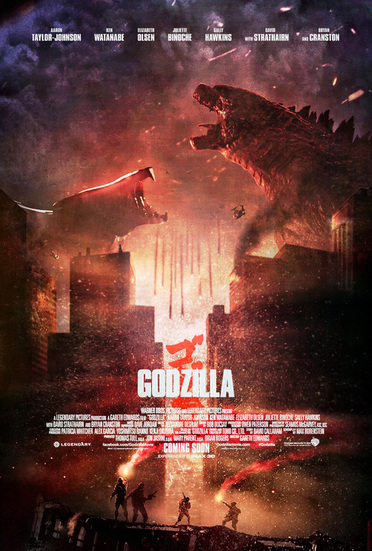 Merchandise In June 2013, Variety reported that Warner Bros. Consumer Products and Legendary Entertainment had assembled a large team of partners to make licensed merchandise to be released in conjunction with the film. Bandai America produced a line of toys, and other products were produced by NECA, Jakks Pacific, Bioworld, Trevco, Rubie's and Sideshow Collectibles. Bandai and NECA produced toys inspired by the film; JAKKS Pacific produced large-scale figures and other toy products; Rubie's produced Godzilla costumes; and Sideshow Collectibles produced collectible statues. A novelization, written by science-fiction writer Greg Cox, was published by Titan Books in May 2014, to coincide with the film's release. Cox has previously written novelizations for movies, including Legendary's own The Dark Knight Rises. He has written numerous Star Trek novels. Two other books are scheduled for release including Godzilla: With Light and Sound! for children, and Godzilla: The Art of Destruction, a collection of artwork, plus interviews with the director and cast members. Legendary announced in January 2014, along with a video message by director Edwards, a tie-in graphic novel to be released on May 7, 2014, one week before the movie. Entitled Godzilla: Awakening, the novel's events take place decades before the events seen in the film. It is co-written by Greg Borenstein and the film's screenwriter Max Borenstein, with cover art by Arthur Adams and interior art by Eric Battle, Yvel Guichet, Alan Quah and Lee Loughridge. The tagline is "Delve into an incredible mystery, generations in the making. At the dawn of the atomic age, humanity awakens lifeforms beyond imagination, unleashing monumental forces of nature." Pictures of the line of toys, including a Godzilla "Atomic Roar" model by Bandai were leaked to the internet in March 2014. The Godzilla model has "atomic fire breath." The toys shipped in March 2014. A tie-in game for mobile devices was announced in March 2014. The game, titled Godzilla Smash 3, allows moves by matching three items of a similar type in a row. It is being made by Rogue Play and features puzzle-based gameplay similar to Candy Crush. Above the game board, a view of Godzilla destroying various military vehicles is featured and the different attacks correspond to the combinations the player scores. The game is set for release in May 2014. Legendary's Godzilla is set to be featured as a playable character in Bandai Namco's PS3 exclusive fighting game simply titled "Godzilla", along with other playable incarnations including Toho's Heisei and Millennium era Godzilla incarnations. 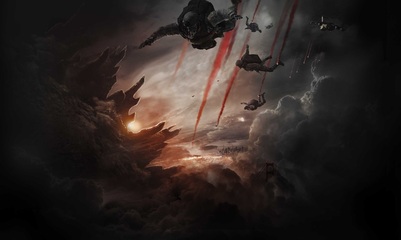 Release Godzilla had its world premiere at the Dolby Theatre in Los Angeles on May 8, 2014. Godzilla received wide release worldwide in 2D, 3D and IMAX 3D beginning May 16, 2014. In the United States, the film was given a PG-13 rating by the Motion Picture Association of America (MPAA) for "intense sequences of destruction, mayhem and creature violence." The film was released in China on June 13 and in Japan on July 25, 2014. In April 2014, Toho had an early screening of Godzilla and gave a positive review. Edwards said, "They saw it yesterday and I got an e-mail saying they thought it was fantastic! So that was a relief." Legendary also held screenings for the military. Box office The film made $9.3 million in the United States at late-night screenings on May 15, the day before its release, the third highest for a 2014 film so far and one of the best late-night openings for a non-sequel. Its opening weekend gross of $93.2 million broke the records for the highest weekend debuts for a disaster film and a creature feature. It was estimated that approximately half of the gross was in 3D screenings. In its second weekend, which saw competition from X-Men: Days of Future Past, Godzilla had a 66% drop, similar to the second weekend drop of the 1998 film. The 1998 film had a final domestic tally of $231 million adjusted for inflation. "Overseas, steep declines were also witnessed on the second weekend. Godzilla fell by roughly two-thirds". On its opening day of June 13 in China, Godzilla grossed $10.9 million for the largest opening day in China of 2014. Its opening weekend of July 25–27 in Japan netted $6.95 million, considered a "robust debut", and pushed its box office gross over $500 million. It was the number one movie in Japan, and had the second-highest opening weekend in Japan of any foreign film in 2014. At the end of its run in theaters, Godzilla grossed $200,676,069 in North America and another $324,300,000 from international markets for a worldwide total of $524,976,069. 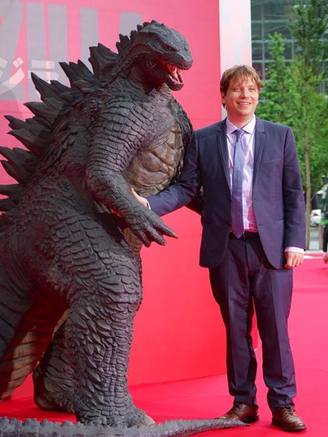 Critical reception Godzilla received "largely positive" reviews from film critics. Review aggregation website Rotten Tomatoes gives a 73% approval rating from critics, based on 254 reviews with an average score of 6.6/10. The site's consensus reads: "With just enough human drama to anchor the sweeping spectacle of giant monsters smashing everything in sight, Gareth Edwards' Godzilla satisfyingly restores the franchise's fire-breathing glory." On Metacritic, which assigns a weighted average based on selected critic reviews, the film has a score of 62 (indicating "generally favorable reviews") based on 48 reviews. CinemaScore reported that cinemagoers gave the film an average grade of B+ on an A+ to F scale. Many critics praised the creature design, special effects and monster fighting. Richard Roeper stated, "Edwards and his team produce consistently stunning visuals." Tom Russo of the Boston Globe stated "Crafted with motion-capture technology and an aesthetic eye toward tradition, Godzilla is convincingly rendered here, making for some genuinely electrifying moments. There’s the monster’s battleship-buffeting partial reveal. That initial footfall, and the way it instantly communicates Godzilla’s impossible scale. That initial blast of his radioactive dragon’s-breath, and a stunning encore." Zacharek praised the scene where Godzilla "looms, glamorously and ominously, from behind a row of orange-red lanterns strung up in San Francisco's Chinatown: They tremble in the air, their cheerful serenity disrupted by the vibration of his bad-mood footsteps and even more punishing glare." A. O. Scott of the New York Times praised two sequences: "one on a rainy San Francisco bridge, the other at a railroad trestle somewhere in Nevada — offer master classes in how to create suspense out of shadows, quiet and the sheer agony of waiting for something to happen." 10 Second Reviews gave the film 7/10 "A rampaging disaster flick with a jaw-dropping title character. Subtlety & story aren't its strengths but it looks & sounds sensational." The screenplay, which held back revealing Godzilla until nearly an hour in, drew varying opinions. Peter Howell of the Toronto Star noted that "Edwards wants to do more than make our eyes bulge and our popcorn crunch. For most of the first half of the film, we get mainly tantalizing glimpses of Godzilla and its new sparring partner, a giant insect parasite called MUTO... But when the time comes to stop the fan dance, Edwards makes sure Godzilla is ready for its close-up, letting out a mighty roar directly to camera. The theatre literally seems to shake." Roth Cornet of IGN agrees, "As in the classic, they hold the titular monster back for quite some time, and while the slow burn may not agree with a modern audiences’ desire for rapid-fire storytelling, once the monster action really gets going it is glorious to behold, with the finale a thing of utter, spectacular beauty. I’ll confess, I would have liked to see more of that action, and Godzilla earlier in the film, but am equally struck by what is in many ways a bold and well-thought-out pacing choice." Stephanie Zacharek of the Village Voice felt that "The big guy's too small a part of his own movie." Norman Wilner of Now defended the screenplay, considering the movie "Spielbergian in its storytelling, guided not just by Jaws and Jurassic Park but by Close Encounters of the Third Kind as well." Empire gave the film three stars praising the filmmaking, noble intentions and "cracking" monster action but criticizing it for not reconciling the preposterous premise and clichéd characters of the B movies that inspired it with its solemn tone. In its "books, arts and culture" blog, The Economist, in a review that compares the film against the original, concluded "The right way to balance seriousness and silliness in a Godzilla film, it seems, is to have a thoughtful script about nuclear dread offset by some spectacular scenes of behemoth-vs-humanity devastation. Mr. Edwards' method is to switch things around, so that the screenplay is laughable but the mood and visuals are as drab as possible. His main achievement is to make Mr. Emmerich's version seem halfway decent after all." One criticism several critics have leveled at the film is that the human characters are thinly developed. Todd McCarthy of The Hollywood Reporter considered it "superbly made but burdened by some dull human characters enacted by an interesting international cast who can't do much with them, this new Godzilla is smart, self-aware, eye-popping and arguably in need of a double shot of cheeky wit." Lou Lumenick of the New York Post said "even in 3-D, these human characters are barely one-dimensional, but in the end that doesn't really matter very much." Wilner agreed that "People are just there to bear witness or run like hell." Robbie Collin of The Daily Telegraph gave the movie four stars out of five, and echoed the Spielbergian references in the use of the human characters: "if anything, when the film introduces a plot-thread about absent fathers, the Spielberg-homaging start to feel a touch schematic. But hey: these are legitimate ways to build empathy into a special-effects film. Let’s not be picky." A. O. Scott, while stating that the movie surpasses the 1998 film, added, "One of the pleasures the movie offers is the thought that actors who have done splendid work elsewhere ... are being paid well for shouting, grimacing and spouting expository claptrap." Analysis William Tsutsui, author Godzilla on My Mind, discussed the new film in an article in Foreign Affairs magazine. "This latest reboot brings to the screen a Godzilla that remains true to the spirit of the Japanese series while creating a very American, very twenty-first-century monster." He noted that the film "depicts gluttony for food and sex in ways that were never a feature of Japanese productions. There are far more overt displays of affection in the first 15 minutes of the 2014 Godzilla than in the entire Japanese franchise, which totaled one very chaste kiss over 50 years." He also noted that the film is more violent than the Japanese series, showing more carnage. The Godzilla character, in its heroism, is reminiscent of the 1960s and 1970s Japanese Godzilla, but not anthropomorphized like those. Also, the identity of the character as Japanese is lost: "In the 28 films made by Toho, Godzilla is unmistakably identified as one of wareware Nihonjin (we Japanese). After liberating San Francisco from the spawning MUTOs, Godzilla is thus crowned as a defender of the United States." 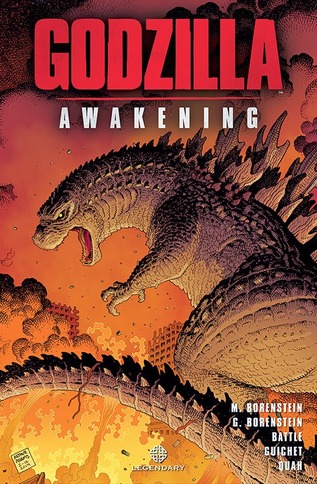 Home media Godzilla will be released on Blu-ray Disc and DVD formats on September 16, 2014 in North America. It was released for digital HD download on August 26, 2014. In an interview with Toho-Kingdom.com, producer Thomas Tull confirmed that an extended version of the film is planned. Target will release a target-exclusive edition of the Blu-ray featuring an additional exclusive featurette titled "Godzilla: Rebirth of an Icon". Warner Brothers - Region A - Blu-Ray Picture Format: 2.40:1 (1080p) [MPEG-4 AVC] Soundtrack(s): English (DTS-HD Master Audio 7.1) Spanish (Dolby Digital 5.1) French [Canada] (Dolby Digital 5.1) Subtitles: English SDH, French, Spanish Extras: MONARCH: Declassified (1080p) Operation: Lucky Dragon (2:44) MONARCH: The M.U.T.O. File (4:29) The Godzilla Revelation (7:25) The Legendary Godzilla (1080p) Godzilla: Force of Nature (19:18) A Whole New Level of Destruction (8:24) Into the Void: The H.A.L.O. Jump (5:00) Ancient Enemy: The M.U.T.O.s (6:49) Case type: Keep case with slipcover Notes: Comes with DVD and Digital HD (UltraViolet) also available with Blu-ray 3D. Sequels Edwards stated that he wanted Godzilla to work as a standalone film with a definitive ending, and he opposed suggestions that the ending should leave the film open for a sequel. He states that he has no problem coming back to do a sequel if the movie does well, but his main concern was delivering a satisfying experience with the current film: "I want a story that begins and ends, and you leave on a high. That's all we cared about when we were making this; just this film. If this film is good, the others can come, but let's just pay attention to this and not get sidetracked by other things." At WonderCon 2013, Guillermo del Toro expressed enthusiasm for a potential crossover between Godzilla and del Toro's Pacific Rim—another Legendary Pictures kaiju film—but stressed that no such plans are in place. In an interview at the 2013 San Diego Comic-Con, Edwards expressed an interest in making a sequel that uses the "Monster Island" concept used in Destroy All Monsters. On May 18, 2014, Deadline.com reported that a Godzilla sequel was officially underway after a successful opening to over $196 million worldwide. The sequel will be a co-production of Legendary and Warner Bros. On May 22, Legendary executives confirmed that a trilogy of Godzilla films is planned, all to be directed by Edwards. The second film of the trilogy will be made after Edwards has directed the first Star Wars spin-off film. At the 2014 San Diego Comic-Con in July 2014, Legendary and Edwards confirmed that they have acquired other Toho properties including Mothra, Rodan, and King Ghidorah. A short teaser movie clip showing concept art of all three with the ending tagline "Let them fight" was shown. Other details of their appearances in either of the two sequels were not announced. In August, 2014, Legendary announced that the sequel will be released June 8, 2018.
2 Comments
2/11/2020 01:42:44 am
At this point we must analyze whether the tablet will be used only for reading comics or if it will have other destinations
Reply
2/28/2023 04:38:45 am
Godzilla is probably the best movie that has ever been made. No other film even comes close to it, in my opinion - that's how much I like it.
Reply
Leave a Reply. |
Release Dates
November 2023
|
|
© 2011-2024 Kaiju Battle. All Rights Reserved.
|
Visit Our Social Media Sites
|
Proudly powered by Weebly
|
- Home
- Features
- Movies/Media
- Collectibles
- Comics/Books
-
Databases
-
Figure Database
>
-
X-Plus Toho/Daiei/Other
>
- X-Plus 30 cm Godzilla/Toho Part One
- X-Plus 30 cm Godzilla/Toho Part Two
- X-Plus Large Monster Series Godzilla/Toho Part One
- X-Plus Large Monster Series Godzilla/Toho Part Two
- X-Plus Godzilla/Toho Pre-2007
- X-Plus Godzilla/Toho Gigantic Series
- X-Plus Daiei/Pacific Rim/Other
- X-Plus Daiei/Other Pre-2009
- X-Plus Toho/Daiei DefoReal/More Part One
- X-Plus Toho/Daiei DefoReal/More Part Two
- X-Plus Godzilla/Toho Other Figure Lines
- X-Plus Classic Creatures & More
- Star Ace/X-Plus Classic Creatures & More
-
X-Plus Ultraman
>
- X-Plus Ultraman Pre-2012 Part One
- X-Plus Ultraman Pre-2012 Part Two
- X-Plus Ultraman 2012 - 2013
- X-Plus Ultraman 2014 - 2015
- X-Plus Ultraman 2016 - 2017
- X-Plus Ultraman 2018 - 2019
- X-Plus Ultraman 2020 - 2021
- X-Plus Ultraman 2022 - 2023
- X-Plus Ultraman Gigantics/DefoReals
- X-Plus Ultraman RMC
- X-Plus Ultraman RMC Plus
- X-Plus Ultraman Other Figure Lines
- X-Plus Tokusatsu
- Bandai/Tamashii >
- Banpresto
- NECA >
- Medicom Toys >
- Kaiyodo/Revoltech
- Diamond Select Toys
- Funko/Jakks/Others
- Playmates Toys
- Art Spirits
- Mezco Toyz
-
X-Plus Toho/Daiei/Other
>
- Movie Database >
- Comic/Book Database >
-
Figure Database
>
- Marketplace
- Kaiju Addicts
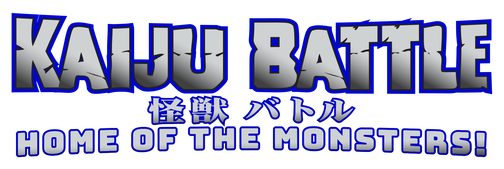
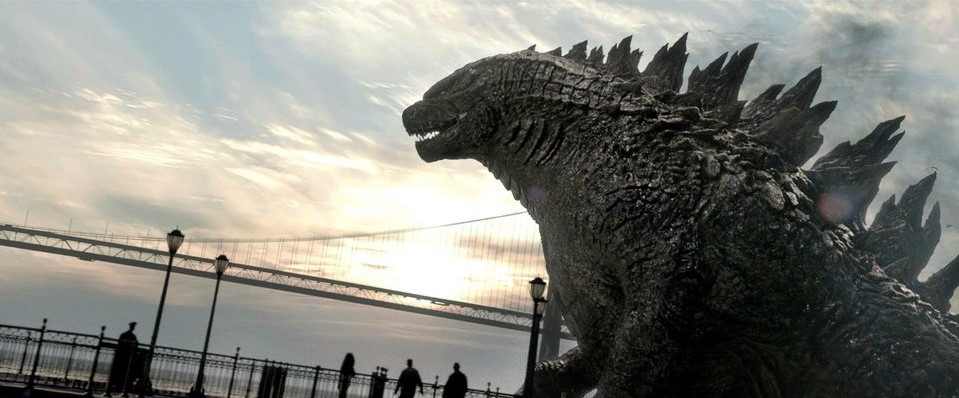
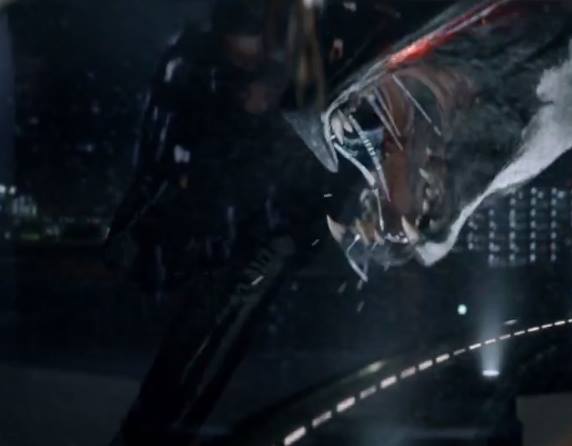
 RSS Feed
RSS Feed